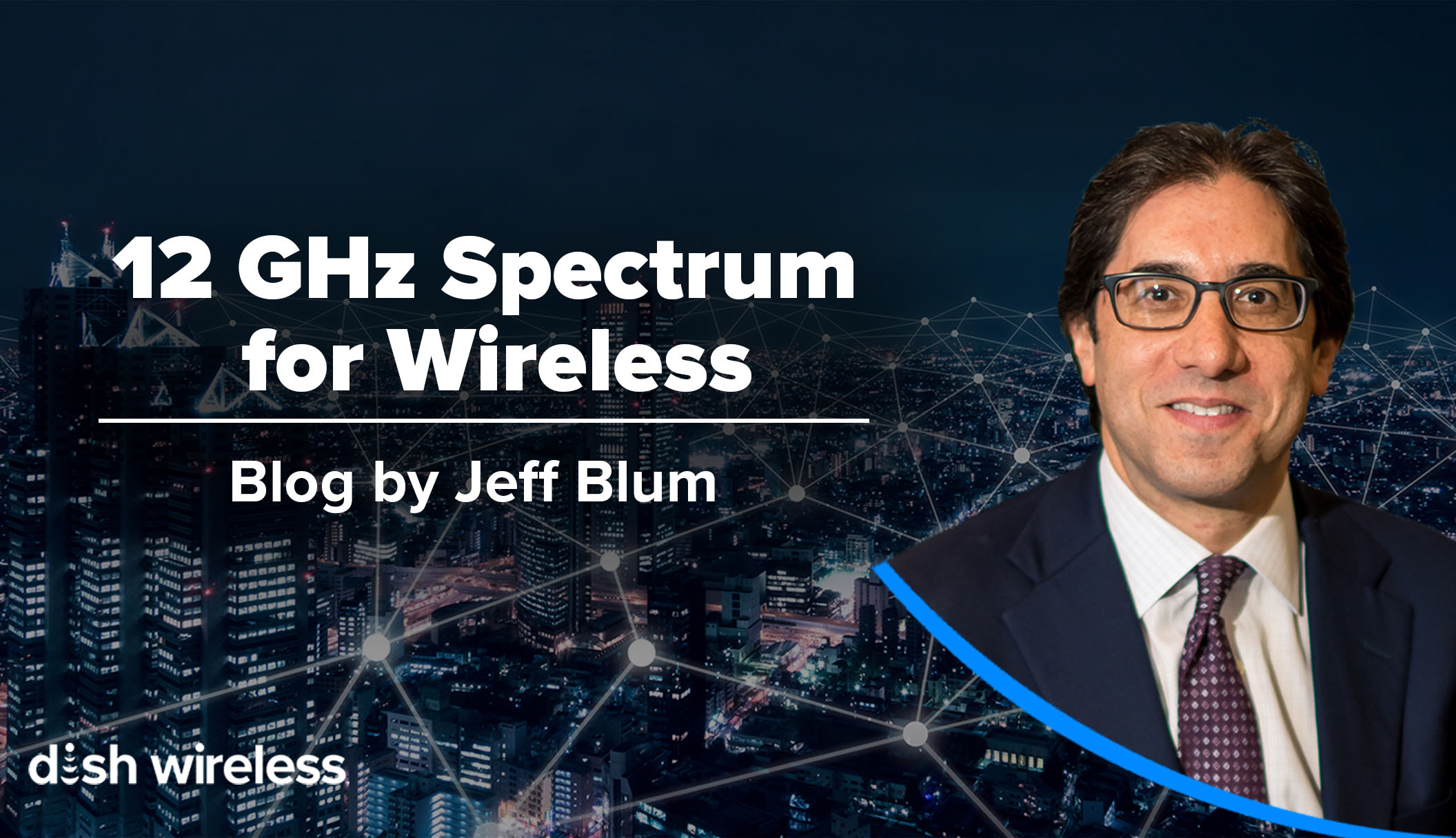5G in the 12 GHz Band: Now is the Time to Act

August 2, 2022
By Jeff Blum, executive vice president External & Legislative Affairs, DISH
The 12 GHz spectrum band is currently allocated for satellite communications and multichannel video and data distribution service (MVDDS). For decades, this band has been an important component of DISH’s ability to provide pay-TV service to millions of direct broadcast satellite (DBS) customers.
But the consumer benefits made possible by the 12 GHz band don’t have to end with satellite innovations. Thanks to advances in technology, 500 MHz of spectrum in the 12 GHz band can now be unleashed to support terrestrial 5G operations.
The FCC adopted the rules that govern the 12 GHz band in the early 2000s. When analyzing the band nearly two decades ago, the FCC had concerns about the potential for interference, so it imposed rules that limit its use. To protect DBS operations, a service – known as MVDDS – was established in the band on a co-primary, non-harmful interference basis with technical requirements that the FCC itself called “very conservative.” More recently, the FCC authorized certain non-geostationary (NGSO) constellations like Starlink to operate using this spectrum on a non-harmful interference basis with respect to DBS.
A lot has changed in the last 20 years. Demand for spectrum has increased dramatically, and wireless technology has evolved rapidly. Unfortunately, despite these advances, the “very conservative” MVDDS rules for the 12 GHz band have stayed the same.
That brings us to today. The 12 GHz band has been described as “the Goldilocks of spectrum”: high mid-band frequencies that propagate much better than millimeter wave (mmWave). With nearly 500 MHz of contiguous spectrum, the 12 GHz band is optimal for 5G. Recognizing the potential benefits of unlocking this spectrum, the 5G for 12GHz Coalition – of which DISH is a member – formed. Coalition members hired expert engineers to determine whether coexistence between satellite and 5G services in the band is possible.
Rigorous analysis conducted by independent experts confirmed that the 12 GHz band can be used for 5G while still protecting incumbent DBS and NGSO users. For example, in May 2022 leading engineering firm RKF Engineering Solutions authored a study using Starlink’s own data, which found that 5G services “would have no effect on 99.85% of NGSO operations in the 12 GHz band.” RKF concluded that while the probability of any harmful interference is no greater than 0.15%, “the probability of any impact on actual users is likely to be substantially less.”
This is great news. And, luckily, the FCC is listening. The Commission has an open proceeding on this issue and it is currently examining data and proposals submitted in support of opening the 12 GHz band for 5G use.
As one of the primary users of this spectrum, DISH would not advocate for action that could harm the service millions of our own customers receive. That’s why we dug into the analysis.
Thanks to the data in the record, DISH and our Coalition partners feel confident that opening the band for 5G use would be a win-win-win: DBS and NGSO services will be protected and innovative new terrestrial wireless services will be able to flourish. These achievements will advance the public interest.
The experts have verified these benefits. Now is the time for the FCC to update its rules and unleash the power of the 12 GHz band.
See below for more resources about the 12 GHz Band:
